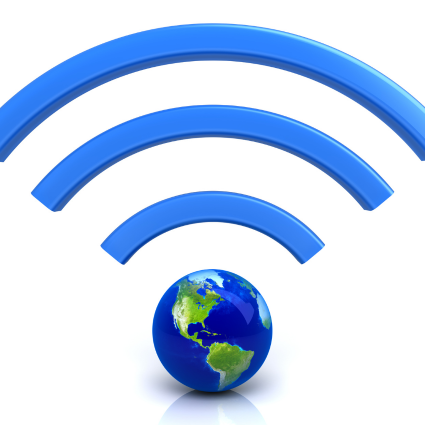Dynamic Frequency Selection (DFS) is a WiFi function of wireless networks that is getting traction. DFS enables WiFi networks to use a portion of 5 GHz frequencies generally allocated to radar transmissions. This includes any weather radar, military radar, or airport radar.
One main benefit of using DFS channels is to utilize under-serviced frequencies to increase the number of available WiFi channels. In this post, we’ll review some important implications of enabling this function in a WiFi network.
U-NII Bands and DFS Channels
To use DFS channels, both the WiFi access points and the client devices have to support this functionality. The following table lists the WiFi frequencies in use for the 5 GHz band. DHS channels use two frequency bands: 5250 – 5330 MHz and 5490 – 5710 MHz.
| Band | DFS | Channel Numbers | Frequency (MHz) |
|---|---|---|---|
| U-NII-1 | 36 – 48 | 5170 – 5250 | |
| U-NII-2A | DFS | 52 – 64 | 5250 – 5330 |
| U-NII-2C | DFS | 100 – 140 | 5490 – 5710 |
| U-NII-3 | 149 – 165 | 5735 – 5835 |
Table 1 – List of WiFi bands, channels, including DFS ones (US), and associated frequencies.
DFS Channel Availability Check
Enabling DFS cause the access points to verify that there are no radars in proximity. This process is called Channel Availability Check (CAC). This routine runs during the boot process of an access point (AP) and during normal operations.
If the AP detects that a radar is using a particular radio frequency, then it will remove it from the list of available channels. This state will last for 30 minutes. Then, the AP will check again if the channel is available for WiFi transmissions.
The Channel Availability Check performed during the boot process can take anywhere between 1 and 10 minutes, depending on which country you’re in. For this reason, DFS channels are not immediately available when an AP boots.
As I just wrote, if the AP detects during the boot process that a DFS channel is currently used by a radar, it will mark it as non-available and exclude it from the list of available channels. This process will have little impact on the WiFi clients.
DFS Events
DFS events, also referred to as radar events, are logged when an AP detects a radar in proximity using a particular channel or is switching to an available DFS channel. When such an event occurs, it indicates potential interference from radar systems. A high number of DFS events may happen if the AP in question is located next to an airport, waterway, port, etc.
Transmit Power Control
In conjunction with DFS, Transmit Power Control (TPC) is employed to regulate the transmit power of WiFi devices, reducing potential interference with radar systems and other communications. TPC dynamically adjusts the power output to the minimum necessary for reliable communication, thereby enhancing coexistence with other spectrum users.
Channel Move Time
If an AP detects, during normal operations, that a radar is using a particular channel that is currently in use, then it may communicate to associated WiFi clients to stop transmitting on that channel. (Please be aware that not all AP vendors may announce a channel change to clients.) The AP will then switch to another available DFS channel within the Channel Move Time, which is generally set to 10 seconds. This behavior will cause connected WiFi clients to be disconnected from the network for a period of time before re-connecting to a different channel.
It’s very important to keep this behavior in mind when enabling the DFS function. WiFi networks that are servicing real-time and mission-critical applications may want to avoid such disconnections caused by DFS frequencies.
DFS Channels and Countries
As we just described, the use of DFS channels requires the Channel Availability Check . One thing to keep in mind is that available DFS channels will vary from country to country. You can check the Wikipedia page that lists WLAN channels to see your own country’s requirements for DFS and frequencies in general.
Conclusion
If you want to learn more about this function in WiFi networks, I recommend reading the FCC document that describes this technology. Also, WiFi expert Nigel Bowden has written a more complete and interesting article about this topic on his blog. Nigel includes some background information on radar signals that use the same frequencies used by DFS in WiFi. Lastly, if you are a wireless engineers interested in WiFi monitoring from the client perspective, check out NetBeez.





